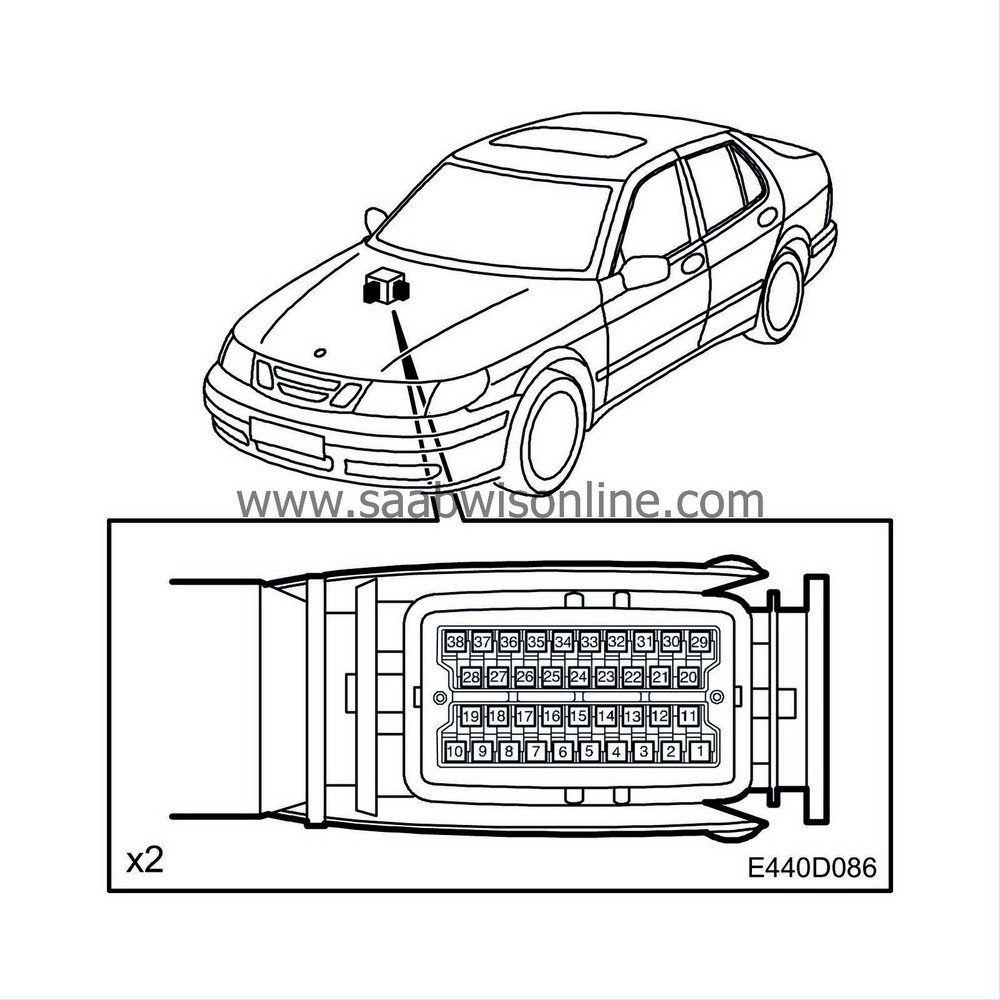Control module
| Control module |
| • |
Shift points
|
|
| • |
System pressure
|
|
| • |
Engaging the Lock-up (fully engaged or slipping)
|
|
The control module has two 38 pole connectors and is located behind the glovebox in the passenger space. It is specifically programmed for each of the engine types B205E, B235E/R, D223L, or B308E and shall only be used in a Saab 9-5 together with the engine type for which it is programmed. As a spare part the control module is not programmed and consequently must be programmed for the correct engine type by means of Tech 2 and the SPS programming.
The control module receives information from a number of sensors and from other electronic systems. The information is processed and the unit controls the gear changing function according to the selected driving program (Normal, Sport or Manual).
The control module operates the gear changes by manipulating the solenoid valves S1, S2, S3, S4, and S5. These are mounted on the transmission valve housing. The control module also decides if and when the torque converter Lock-up shall be activated. This occurs when a particular combination of solenoid valve settings has been established. Three linear solenoids are mounted in the valve housing. They control Lock-up (SLU), system pressure (SLT), and clutch pressure(SLS).
The control module is continuously supplied with a voltage of +30V and is adapted for a voltage between 9 and 16V during driving. Stored diagnostic trouble codes are not erased from the memory if the voltage supply is interrupted. Communication between the TCM and the SID is with analogue signals. The TCM communicates with other systems via the BUS.
When the ignition switch is turned to the ON position, the control module is activated and turns on the CHECK GEARBOX lamp as a function check. If no faults are found, TCM will turn off the lamp after three seconds.
In the event of a fault in any of the inputs/outputs, the transmission goes into Limp-Home mode. All control module functions will then be disengaged or an emergency operation programme will be activated. The car can then be driven but with limited shifting capability.
The TCM also takes into account wear in the transmission which means that even if the transmission is worn the gear changing is still smooth. In this adaptive system the TCM compares the quality of the current gear change with a gear change matrix located in the control programme and "learns" the pressure and time appropriate to each gear change situation so that the gear change is comfortable. The memory for this, as with the diagnostic trouble codes, is located in an EPROM memory which means that the information is retained even if the voltage supply is interrupted. A consequence of this system design is that the TCM must be initialized with the help of Tech 2 after repairs or after replacement of the transmission or the TCM.
The control module is SPS programmable with the help of the diagnostic instrument.
When handling control modules, it is important to ground yourself first by touching the car's engine, for instance. Avoid touching the control module's connecting pins.



